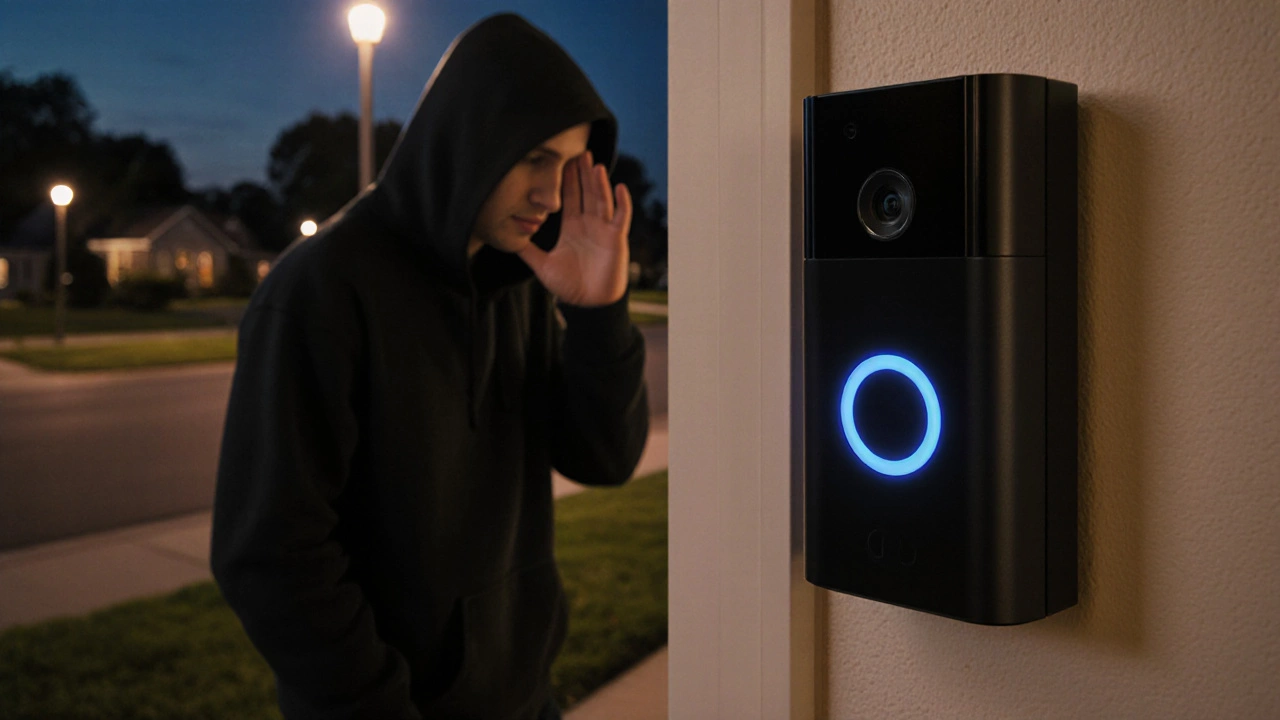When dealing with Ring doorbell burglary, the unauthorized use or exploitation of a Ring video doorbell to facilitate a break‑in. Also known as Ring doorbell intrusion, it often involves tampering with video streams or disabling alerts. This issue ties closely to video doorbells, smart doorbell devices that record visitors and send alerts to homeowners, home security cameras, fixed or wireless cameras that monitor indoor and outdoor spaces, and burglary prevention, measures aimed at stopping forced entry into a property. Understanding how these elements interact helps you build a stronger defence.
A recent Ring doorbell burglary case showed that thieves can hide a small device inside the doorbell housing, loop the video feed, and then smash a window while the system thinks everything is normal. That example illustrates three semantic triples: Ring doorbell burglary encompasses video doorbell misuse; effective burglary prevention requires motion sensors and alarm integration; and GDPR privacy influences how long video footage can be stored without a subscription. If you ignore any of those links, you leave a gap for criminals.
Video doorbells are attractive because they sit at the front line of a home’s perimeter. Their built‑in motion detectors, like PIR or dual‑tech sensors, can be fooled by angled placement or bright sunlight, leading to blind spots. When those sensors fail, the alarm system loses its first line of warning. Pairing a Ring doorbell with a dedicated home security camera creates overlapping coverage, but only if the devices share the same network and encryption keys. Weak Wi‑Fi passwords or outdated firmware turn that overlap into a security hole.
Legal and privacy rules add another layer. In the UK, GDPR requires you to store personal video data only as long as it’s needed for a legitimate purpose. That means a Ring subscription that promises 60‑day video retention may be overkill for a homeowner who simply needs a 24‑hour loop. On the flip side, deleting footage too quickly can hamper police investigations after a burglary. Finding the sweet spot between compliance and practicality is part of the prevention strategy.
Practical steps start with the hardware. Use a tamper‑resistant mounting bracket and seal any gaps with weather‑proof silicone. Enable two‑factor authentication on the Ring app and set a strong, unique Wi‑Fi password. Turn on end‑to‑end encryption if the model supports it, and schedule regular firmware updates. Add a secondary motion sensor—either a microwave or ultrasonic type—to catch movements that PIR sensors might miss. Connect those sensors to a self‑monitored alarm that sends you an instant push notification, so you can react before a thief even reaches the door.
Finally, think about storage options. If you don’t want a paid Ring subscription, consider a local NVR (Network Video Recorder) that records to a secured hard drive for up to 30 days. Make sure the NVR is placed in a locked cabinet and backed up to an offline USB drive. This approach keeps you compliant with GDPR while still giving you enough footage to hand over to law enforcement if needed.
Below you’ll find a collection of our latest articles that dive deeper into each of these topics—motion sensor types, alarm system drawbacks, legal aspects of Ring doorbells in UK flats, and how long Ring videos last without a subscription. Browse the posts to get the details you need to protect your home from a Ring doorbell burglary and boost overall security.

Explore whether Ring doorbells lure burglars, review real crime data, and get actionable steps to secure your smart doorbell and home.